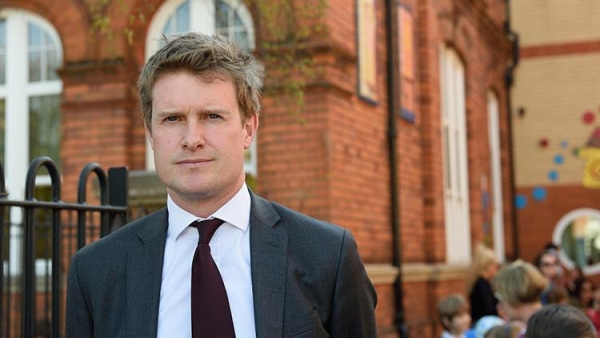
Tristram Hunt: 'With Brexit, our schools must be refocused on subjects such as art and design – instead, they're on the endangered list'
2018.01.26
The director of the V&A, and former shadow education secretary, explains how his organisation aims to support schools in delivering the art and design subjects in schools at risk of falling onto the endangered list
What should the role of museums be in an age of Brexit? At the Victoria and Albert Museum (V&A), we think it should be about supporting education so Britain has the skills to succeed in an even more competitive global environment. In doing so, we are returning to our early Victorian roots as an institution passionately focused on teaching design, spreading culture, and energising our creative industries. "The principles of design should form a portion of any permanent system of national education," the 1836 Select Committee on Arts and their Connection with Manufactures recommended. Sir Henry Cole was even more blunt: "'Straight lines are a national want," he wrote. And: "Unless you begin with the child and teach him the ABC of drawing, you have little chance of establishing any permanent system of art-instruction in this country."
The V&A was born out of the Mechanics' Institute movement of the 1830s and the system of the design schools that followed. Fear over the poor quality of British design relative to its European competitors (highlighted in the Hyde Park exhibits) led to the rethinking of art education from first principles. Rather than just fine art, Britain needed an education system that supported industrial design. And the South Kensington museum was to act as the hub of this design school movement – training teachers, reforming curricula, and lending its collection across the country. Today, that work goes on: day in and day out, we champion the value of object-based learning across the country.
Over 350,000 were involved in our education programme over the last year, with well over 100,000 children learning about art, design and performance through the museum. Naturally, our focus at the V&A is on the particular need to encourage the teaching of design and technology. As our creative economy grows, international competition accelerates, and the provision of creative subjects is squeezed, there is a desperate urgency around art and design education. So that is why the V&A has decided to step in. This autumn, the new design and technology GCSE is being launched and we want to revive our founding principles to make it a success. The facts are stark. Reports from the Association of School and College Leaders, as well as the Cultural Learning Alliance, point to dramatically falling numbers in art, design and technology subjects being taken up at GCSE and A level.
The combination of budget challenges, accountability systems, and parental pressures has put many art and design subjects on the endangered list. All of which is taking place at exactly the moment when we need an education system more attuned to creativity, design, innovation, enterprise and interdisciplinary nimbleness than ever. The digital economy requires a dexterity and design mindset, which could be under threat in school provision if current trends continue.
Rightly, the government has decided to reboot the design and technology GCSE to address the fall off, and our view at the V&A is that we have a responsibility to support schools and teachers in delivering this subject in the most exciting manner possible. So, we have decided to use the generous prize money from the Art Fund Museum of the Year Award – following our announcement as 2016 Museum of the Year – to use our skills, collections, and world class educational provision to make a difference.
Our plan is this: beginning in Coventry and Blackburn, we are going to link up with brilliant regional museums, a consortium of secondary schools and local industry to support the teaching of design and technology and art and design for 11-16 year olds. Our aim is to support students in key stages 3 and 4 in communities with histories of manufacturing through the professional development of teachers, bolstering the education provision of local museums, and sharing our collections.
This programme, DesignLab Nation, brings together two great impulses within the V&A: our education mission and circulations heritage, which means we are proud to lend more objects than any other UK museum. After Coventry and Blackburn, and then Sheffield, our plan is to grow year upon year as a national hub for design education. But, crucially, we will be doing this in alliance with local cultural institutions who know better than anyone what their students, teachers, and businesses need from design education. This museum emerged in the mid-19th century with a deeply social and civic function. At a time of real concern about how Britain plays its part in the world and how we ensure all communities across the U.K. have the skills and cultural capacity to succeed, this is the V&A's response. And from the design of 19th-century Japanese incense burners, Balenciaga dresses and Christopher Dresser toast racks, to Sonia Delaunay fabrics, it will be about more than straight lines.
Today on BBC Radio 4’s Front Row at 7.15pm, the 2017 finalists of the Art Fund Museum of the Year Award will be announced as part of a live discussion about the role of museums. Tristram Hunt will join the panel discussion with Stephen Deuchar, director of the Art Fund; Hartwig Fischer, director of the British Museum and Sarah Munroe, director of the Baltic Centre for Contemporary Arts.
Source By: https://www.tes.com/
